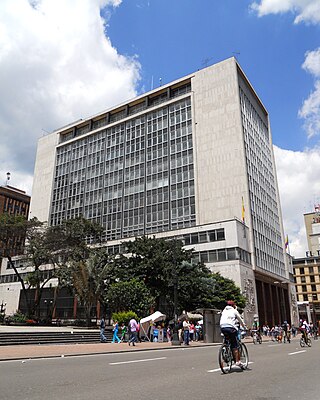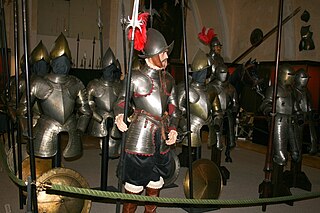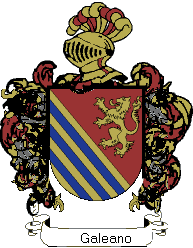
The Colombian peso is the currency of Colombia. Its ISO 4217 code is COP. The official peso symbol is $, with Col$. also being used to distinguish it from other peso- and dollar-denominated currencies.

Francisco José de Paula Santander y Omaña was a Neogranadine military and political leader who served as Vice-President of Gran Colombia between 1819 and 1826, and was later elected by Congress as the President of the Republic of New Granada between 1832 and 1837. Santander played a pivotal role in the Colombian War of Independence being one of the main leaders of the Patriot forces and helped lead the Patriot Army alongside Simón Bolívar to victory. He's often credited with creating the legal foundations for democracy in Colombia, as well as creating the country's first system of public education. For these reasons he is considered a National Hero in Colombia and has thus commonly been known as "The Man of the Laws" as well as the "Organizer of Victory".

Antoine Christophe Saliceti was a French politician and diplomat of the Revolution and First Empire.

The Caribbean region of Colombia or Caribbean coast region is in the north of Colombia and is mainly composed of 8 departments located contiguous to the Caribbean. It's the second most populated region in the country after Andean Region with approximately 11 million residents according to the Colombian Census 2018. The area covers a total land area of 110,000 km2 (42,000 sq mi), including the Archipelago of San Andrés, Providencia and Santa Catalina in the Caribbean Sea.

The Bank of the Republic is the central bank of Colombia. It was initially established under the regeneration era in 1880. Its main modern functions, under the new Colombian constitution were detailed by Congress according to Ley 31 de 1992. One of them is the issuance of the Colombian currency, the peso. The bank is also active in promoting financial inclusion policy and is a leading member of the Alliance for Financial Inclusion.

The National Administrative Department of Statistics (DANE) does not collect religious statistics, and accurate reports are difficult to obtain. However, based on various studies and a survey, about 90% of the population adheres to Christianity, the majority of which (70.9%) are Roman Catholic, while a significant minority (16.7%) adhere to Protestantism and other Christian groups.

The Spanish conquest of New Granada refers to the conquest by the Spanish monarchy of the Chibcha language-speaking nations of modern-day Colombia and Panama, mainly the Muisca and Tairona that inhabited present-day Colombia, beginning the Spanish colonization of the Americas. It is estimated that around 5.2 million people died as a result of Spanish Conquest, either by disease or direct conflict, this is roughly around 88% of the Pre-Columbian population of Colombia.

Colombian geography presents formidable challenges to roadbuilders, who need to integrate its largest production centers deep within the Andes with major ports in both the Atlantic and Pacific oceans. All of this creates a heavy premium to roadbuilding, compared with the cost of building highways in flat terrain. Therefore, the Colombian government is undertaking a great effort in order to improve the highway system, under the name of Fourth Generation Highways, with the intent of updating major roads to international safety and speed standards. This project will be funded through both public and private capital, with a total worth of nearly US$23 billion, accounting to a yearly investment of 3% of national GDP, improving or building a grand total of over 8.000 km of roads. These roads are expected to improve Colombia's competitiveness in order to successfully take advantage of the many trade agreements signed in recent years.

Colombia–France relations are the bilateral relations between Colombia and France. Both nations are members of the OECD and the United Nations.
Oscar Rodríguez Naranjo (1907–2006) was a painter from Socorro, Santander Department, Colombia. His works include mainly oil paintings and sculptures.

Colombian-Spain relations are the bilateral relations between the Kingdom of Spain and the Republic of Colombia, formally established in 1881, several decades after Colombia's independence from the Spanish Empire. Both nations are members of the Organization of Ibero-American States and the United Nations.

Hernán Pérez de Quesada, sometimes spelled as Quezada, was a Spanish conquistador. Second in command of the army of his elder brother, Gonzalo Jiménez de Quesada, Hernán was part of the first European expedition towards the inner highlands of the Colombian Andes. The harsh journey, taking almost a year and many deaths, led through the modern departments Magdalena, Cesar, Santander, Boyacá, Cundinamarca and Huila of present-day Colombia between 1536 and 1539 and, without him, Meta, Caquetá and Putumayo of Colombia and northern Peru and Ecuador between 1540 and 1542.
Juan de Simancas Simancas was a Roman Catholic prelate who served as Bishop of Cartagena (1561–1570) and Bishop-Elect of Coro (1556–1561).
Bartolomé Camacho Zambrano was a Spanish conquistador who took part in the expedition of the Spanish conquest of the Muisca led by Gonzalo Jiménez de Quesada. He accompanied Gonzalo Suárez Rendón in the foundation of Tunja on August 6, 1539, and settled in the city. In 1583, Bartolomé Camacho Zambrano was mayor of Tunja together with Francisco de Avendaño.

Martín Galeano was a Spanish conquistador of Genovese descent who is known as the founder of the towns of Vélez, Oiba and Charalá in Santander, Colombia. He took part in the expedition of the Spanish conquest of the Muisca led by Gonzalo Jiménez de Quesada. After the foundation of Bogotá, he was sent northwards into Guane territories.
Martín Yañéz Tafur was a Spanish conquistador who participated in the foundation of Cartagena, the Spanish conquest of the Muisca and the conquest of the Panche.

Antonio de Lebrija (1507–1540) was a Spanish conquistador who participated in the Spanish conquest of the Muisca and the Chimila peoples. He was the treasurer of the conquest expedition which left Santa Marta in April 1536 following the high quality salt trail, the Camino de la Sal, along the Suárez River up the slopes of the Eastern Ranges of the Colombian Andes towards the Muisca Confederation.

The October 9 Revolution was a successful revolt against the Spanish Empire in Guayaquil on October 9, 1820. It was led by the General Antonio José de Sucre and directed by Simón Bolívar. The revolt established a revolutionary junta and created the Free Province of Guayaquil, an independent state. The independence of Guayaquil revived the war of independence of the Real Audiencia de Quito as part of the Spanish American wars of independence. Prominent events in the revolution include the uprising of the Spanish garrison in the city of Guayaquil and the control of the Pacific by the Liberating Expedition of Peru, under the command of José de San Martín.